Casiotone MT-68- owned from May 2003- present, bought for $29 or so.
The last keyboard I bought in my Spring toy keyboard buying spree was the Casio MT-68. I chose this model because I had heard a lot of good things about it. It was released around 1983, has 49 keys (which feel nice!), 20 instrument sounds, 12 rhythms, auto accompanyment, and stuff like that. It's also a really ugly brown color.
The sounds are apparently generated by crossfading two single-cycle waveforms. Some of the sounds are sent through capacitor filters that make them sound dull and muffly. There are two switches to edit the sounds- one to use an alternative waveform crossfade envelope, and one to use an alternative amplitude envelope. Then there are two more switches- one for vibrato or delayed vibrato, and one for reverb or sustain (just different envelope settings). All of these settings in combination give it a pretty nice degree of flexibility.
The rhythm section uses very nice sounding analog drums, much different from the blippy square waves or crunchy PCM samples of most similar keyboards. The bottom section of the keyboard can be used for bass or chord sounds. When a rhythm is playing, it can be used for auto-accompanyment with optional arpeggio. Somewhat like the PSS-570, there are slide switches for bass, chord, and arpeggio variations. It sounds very nice but playing the auto-accompanyment requires very precise timing for chord changes, or else it will seem to change mid-note.
I finally got around to opening it up. At some point before I bought it, the batteries leaked and corroded two of the case screws really badly, so I had to drill out the screws (which unfortunately melted the plastic and pushed one of the screws through the front of the case...). It's basically one board with two chips- one, the NEC D930G, is for scanning the keyboard and front panel and producing the accompanyment sounds. The other, the NEC D931G, produces the main instrument sounds. There are several trimmers inside that can adjust the analog drum sounds- decay for the bass drum, congas, and claves, a sort of tone control for the snare drum (made up of noise and an analog blip, I think the trimmer adjusts the decay of the analog part), and pitch for the cymbals. There's nothing really exciting but it's nice to fine tune the drum sounds a little. I didn't do much circuit bending exploration but it's possible to get some interesting variations in the drum sounds by messing with their circuits, random notes by feeding signals into the key scanning lines, and evil sounding distortion by messing with the resistor array that acts as an R-2R DAC. It also wouldn't be hard to add separate outputs for the sounds- probably it's possible to have arpeggio, chords, bass, drums, and the main sound all on different outputs.
Also, quickly disconnecting and reconnecting the power can produce interesting glitchy/noisy timbral variations to the sounds.
pictures:
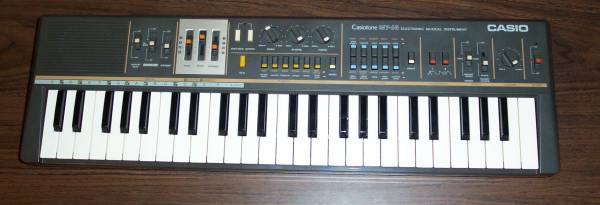
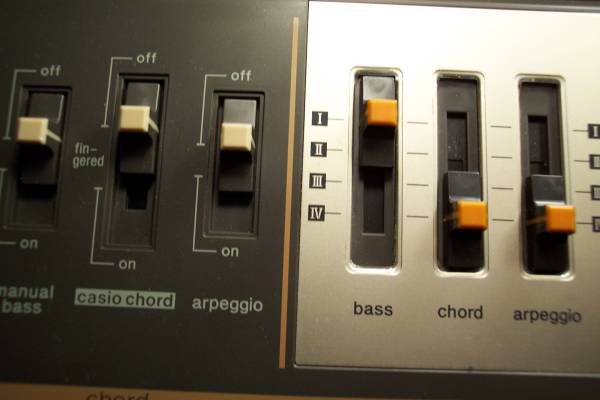
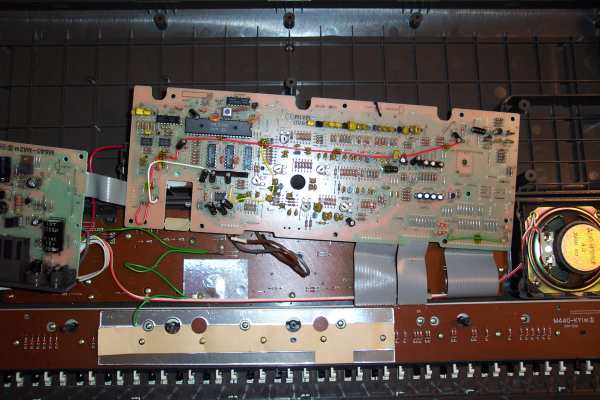
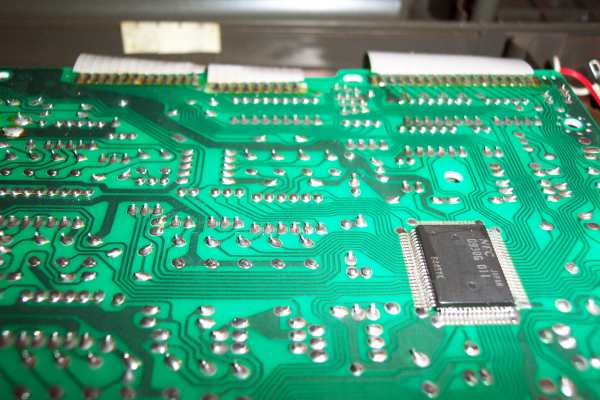
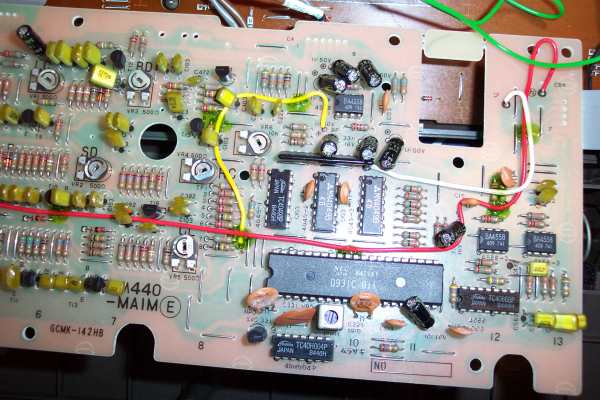
sounds:
MT-68-1- cheesy short thing, there are two more demos here
links: surprisingly there are a lot of resources for this keyboard (and similar models).
garth steel klippert has multitracked an MT-68 to make much better music than my lame demo: :: garth steel klippert ::
The WarrantyVoid Tablehooterpage has some info about modifying the CT-410V (a similar machine) here: Casio CT-410V (MT-400V)
Robin Whittle wrote a lot of nice detailed info about early Casio hardware here: [music-dsp] patents (the softsynth was patented 1997)
He also wrote a nice thing on the Analogue Heaven mailing list about them. Since I can't link directly to messages there, and since it would otherwise be hard to get to, I've copied it here: casio_hardware.txt
back to synth index


